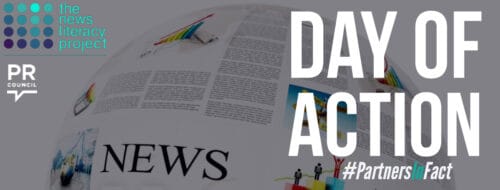Get Smart About News

The News Literacy Project is a not-for-profit founded 10 years ago by Alan Miller, a Pulitzer Prize-winner and former Los Angeles Times investigative journalist. The organization takes a nonpartisan approach to news literacy education helping students – and now the general population – sort fact from fiction in the digital age. Building this essential skill to help individuals appreciate the role of journalism – and be active citizens of a democracy, is the Project’s central goal.
The organization has seven simple steps to not getting fooled in what is actual fact:
- Check your emotions. What is your first reaction? Are you angry? Outraged? Excited? Misinformation often tries to hijack our rational minds with emotional appeals.
- Determine the purpose of what you are watching, reading or hearing. It is a news report? An opinion piece? An ad? Something else? And what do you know about the source?
- Be aware of your own biases. “Confirmation Bias” is real and it is dangerous. Are you assuming (or even hoping) something is true or false, just because you believe that too — because deep down inside, you WANT it to be true or false?
- Consider the message. Is it too “perfect?” Overtly or aggressive partisan? Does it use “loaded” language? It is filled with excessive punctuation or ALL CAPS? Does it claim to have a secret or claim to tell you something “they” (the media, the opposition party, etc.) don’t want you to know?
- Search for more information. Are other reputable news outlets reporting the same thing? Have independent fact-checkers contested or “debunked” this story or source? And can you trace it back to where the story first appeared?
- Go deeper on the source. Conduct research into who actually owns a website domain. Check associated social media channels to see what you can uncover – including about tone, followers and types of posts.
- Then go deeper on the content itself, including byline, date, key details, quotes, citations and image search/sourcing.

